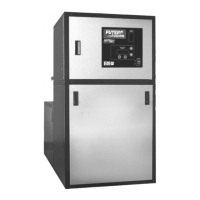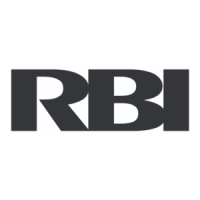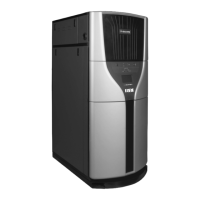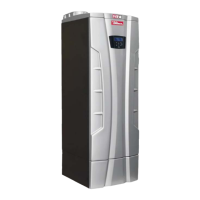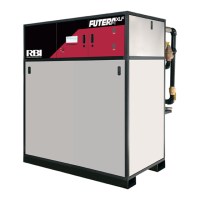66
11.7 - PVC/CPVC
vent piping
materials
WARNING!!!
Use only
the materials listed in
Figures
11-7 and 11-8
for vent pipe,
and fi ttings. DO NOT mix vent
systems of different types or
manufacturers, unless listed in
this manual. Failure to comply
could result in severe personal
injury, death, or substantial
property damage.
WARNING!!!
This appliance
requires a special venting
system. The fi eld provided vent
fi ttings must be connected to
the heater following Section
11.7.1. Use only the vent
materials, primer, and cement
specifi ed in this manual to make
the vent connections. Failure to
follow this warning could result
in fi re, personal injury, or death.
WARNING!!!
Do not
insulate PVC/CPVC exhaust
pipe nor install into an
enclosure, closet, alcove or
any other obstruction thereby
preventing the cooling of the
exhaust pipe. Failure to follow
this warning could result in
excessive levels of carbon
monoxide or a fi re, which can
result in severe personal injury
or death!
WARNING!!!
Improper
installation of PVC or CPVC
systems may result in excessive
levels of carbon monoxide or a
fi re, which can result in severe
personal injury or death!
WARNING!!!
All vent
pipes must be glued, properly
supported, and the exhaust
must be pitched a minimum of
a 1/4 inch per foot back to the
heater (to allow drainage of
condensate). Failure to follow
this warning could result in
excessive levels of carbon
monoxide or a fi re, which can
result in severe personal injury
or death!
NOTICE! Installation must comply
with local requirements and with the
National Fuel Gas Code, ANSI Z223.1
for U.S. installations or CSA B149.1
for Canadian installations.
For installation in Canada, vent pipe
system must be certifi ed to ULC-S636
(see
Figures 11-7
).
NOTICE!
Installation of a PVC/CPVC
vent system should adhere to the PVC/
CPVC vent manufacturer’s installation
instructions supplied with the vent
system.
11 - INSTALLATION - Vent and combustion air
11.7.1 - Installing PVC/
CPVC vent and air piping
NOTICE! Use only cleaners, primers,
and solvents that are approved for the
materials which are joined together.
1. Work from the heater to vent or
air termination. Do not exceed the
lengths given in Section 11.4.
2. Cut pipe to the required lengths and
deburr the inside and outside of the
pipe ends.
3. Bevel outside of each pipe end to
ensure even cement distribution
when joining.
4. Clean all pipe ends and fi ttings using
a clean dry rag (Moisture will retard
curing and dirt or grease will prevent
adhesion).
5. Dry fi t vent or air piping to ensure
proper fi t up before assembling any
joint. The pipe should go a third to
two-thirds into the fi tting to ensure
proper sealing after cement is
applied.
6. Priming and Cementing:
a. Handle fi ttings and pipes carefully
to prevent contamination of
surfaces.
b. Apply a liberal even coat of primer
to the fi tting socket.
c. Apply a liberal even coat of primer
to the pipe end to approximately
1/2” beyond the socket depth.
d. Apply a second primer coat to the
fi tting socket.
e. While primer is still wet, apply an
even coat of approved cement to
the pipe equal to the depth of the
fi tting socket.
f. While primer is still wet, apply an
even coat of approved cement to
the fi tting socket.
g. Apply a second coat of cement to
the pipe.
h. While the cement is still wet,
insert the pipe into the fi tting, if
possible twist the pipe a 1/4 turn
as you insert it. NOTICE! If voids
are present, suffi cient cement
was not applied and joint could be
defective.
i. Wipe excess cement from the joint
removing ring or beads as it will
needlessly soften the pipe.
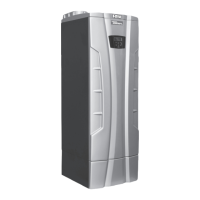
